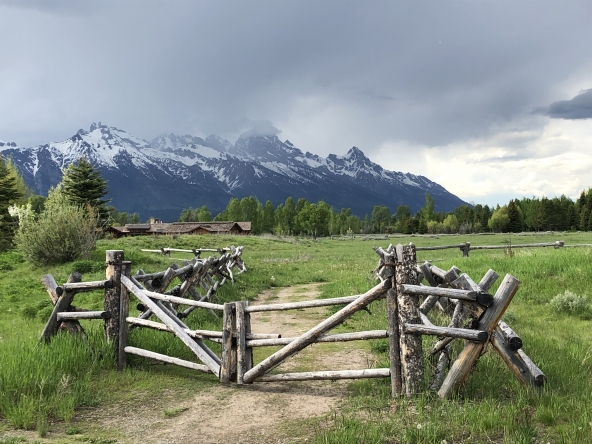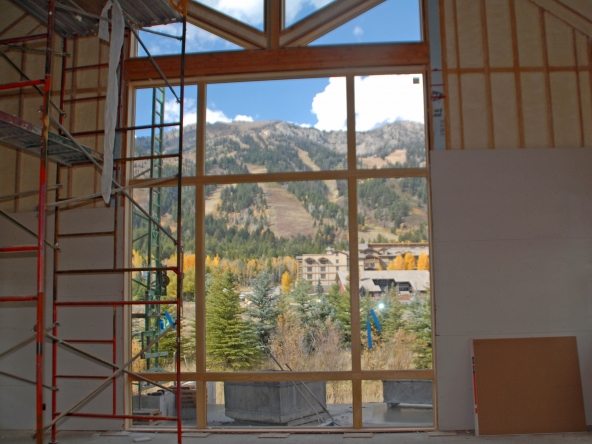In addition to the research I do for my clients, I receive regularly the research of other professionals with a keen interest in Jackson Hole real estate sales such as local bankers, title companies and other Realtors. My thanks to everyone who takes the time to pass along what they know so I can enhance the service I provide.
When it comes to news, trends and statistics related to the national real estate market, however, I tend to scan quickly and move on. Unless, that is, it’s a note from friend and client Dr. Ken Mayland, whose consultancy is ClearView Economics.
Mayland’s information comes to me only sporadically, but today he passed along one of his tightly written, deeply researched and up-to-the minute reports focused entirely on economic indicators related to real estate. I hope you enjoy the information and presentation as much as I did.
1. The numbers. New home sales for December contracted 7.6%, to a 342k sales pace (annualized).
2. Give credit where credit is due. As with existing home sales (see below), the expiration of the first-time homebuyers’ credit of $8000 probably figured into the December decline. In the price distribution of new home sales, all the downturn in sales were seen in homes priced $0-$150k, $150k-$200k, and $200k-$300k, i.e., lower-priced homes where the credit was a more meaningful share of the house cost. Sales were stable or rising in 4 higher cost categories.
3. Average and median home prices rise! Median = +5.2% for December versus November; average = +7.6%. Yes, these statistical facts result from relatively fewer lower-priced homes sold, changing the distribution of home sales by prices. (See the discussion below on prices.)
4. Regional disparities. Northeast = +42.9%; Midwest = -41.1%; South = -7.3%; and West = +5.2%. These differences suggest that there is not an overriding downward trend.
5. Few houses “on the block.” Despite the falloff of new home sales, the inventory of unsold new homes continued to be trimmed. These inventories were pared 1.7%, and are now down 34% y/y. This decline is much greater than the 8.6% y/y drop of sales—which is a positive indication for the housing industry (i.e., historically consistent with a rising housing starts climate).
Other housing news: existing home sales plus Case-Shiller home prices:
6. So what? Existing home sales in December plunged 16.7%, to a 5.45 million unit rate of activity. This was the largest one-month decline in the history of the data. But the November 30 expiration of the first time homebuyers’ $8000 credit figured mightily in these results. As with the “cash for clunkers” program, sales dropped sharply when the program ended. But in the wake of its expiration, light vehicle sales sustained higher selling rates for the rest of 2009 than in the first half of the year. Auto sales appear to be on a rising trend. While existing home sales fell dramatically in December, the y/y change was still a plus 15%. Sales for all of 2009 were up 4.9% versus 2008, the first gain since 2005. THESE are the relevant metrics—the housing market has turned the corner,
7. Are prices up or down? Average existing home prices increased 6.4% in December alone, while the y/y was +3.6%. But the Case-Shiller measure of 20 metro areas home prices dipped 0.2% in November, contributing to a 5.3% y/y price decline. Aside from the differences in months, why are the changes so vastly different? Existing home prices are simply an average of all transactions during the month. November’s data included a lot of low home price sales because they were affected the most by the first-time homebuyers’ credit. (According to the National Association of Realtors, first-time homebuyers bought 51% of all home sales in November but just 43% of sales in December.) That fact biased the average price down. So in principle, average home price changes might not be measuring “home prices” at all, but instead, changes in the composition of sales. That is why they are not particularly useful. On the other hand, the Case-Shiller methodology reflects repeat sales of the same home. Thus, the comparison is apples to apples, and this is the better measure of the Nation’s actual home price situation. Good regional detail is available, as well. So the answer to the question is that home prices remain weak, with foreclosures probably constituting the greatest depressing factor.
8. Actual and shadow inventories (and deep-shadow inventories). Like new home sales inventories, “official” existing home inventories contracted 6.6% in December and are down 11.1% y/y. This is clearly good. But consider this arithmetic: foreclosures amount to about one-third of sales, and in big round numbers, let’s call this 2 million units of sales (at AR). But foreclosures in 2009 will be about 2.8 million, and in 2010 will be well into the 3 million unit zone. Hence, the pool of unsold distressed properties is expanding significantly (and a new wave of option-ARM resets is building). The deep shadow inventory of existing homes for sale are those homes that home sellers would like to unload, but they have taken them off the market due to poor market conditions (low prices and long listing times). The bottom line: home prices will be see considerable headwinds against home price increases for a long time to come. This next year will be an excellent time to buy a house to get great value. And this price competition factor will be a strong headwind acting against new home construction (i.e., housing starts).


